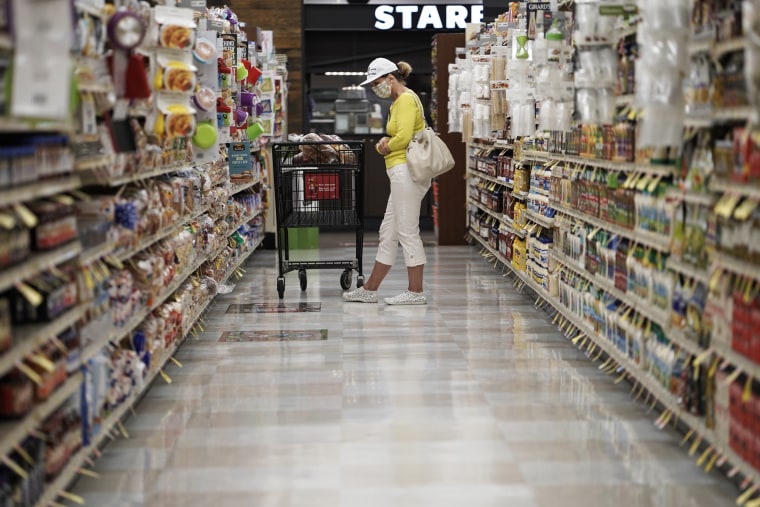Consumer prices increased 5.4 percent last month from a year ago, according to the latest data from the Bureau of Labor Statistics, as pressure from high demand and supply chain issues continues.
The index increased 0.5 percent in July on a month-to-month basis. Economists surveyed by Bloomberg had predicted an increase of 5.3 percent versus a year ago and 0.5 percent from June.
The highest year over year increases were seen in car rentals (73.5 percent), gas (41.8 percent), used cars (41.7 percent), hotels (24.1 percent), and airfare (19 percent).
Specific food items saw increases, led by pork roast (13.7 percent), bacon (11.1 percent), steaks (10.7 percent) and fish (8.5 percent).
Shifts in domiciles also saw pressure, with the cost of moving increasing 13.3 percent and rent going up 2.4 percent.
Pandemic bottlenecks have contributed to much of the index’s increase in the past few months. Backlogs for computer chips have delayed new car production, driving up the cost of used cars. Increases in the used car component alone have accounted for a large chunk of previous month’s increases.
Airfare has soared as a sooner-than-expected rebound in air travel has been met by airlines who overshot the mark in aggressively furloughing pilots and crewmembers without keeping up adequate training and payroll, despite almost $50 billion in payroll support funding from the government.
Prices for hotels and car rental have also increased with the travel surge and are unlikely to moderate any time soon.
Food supply chains have been whiplashed as consumers shifted all consumption to at-home and delivery, and now have been going out to eat again. Covid restrictions and outbreaks have curtailed food production workforces, restricting supply and pushing up prices, particularly in the meat sector. Menu prices are boosting as restaurants pass on wage increases necessary to hire in a tight labor market. The food away from home index rose 0.8 percent in July, its largest monthly increase since February 1981.
Should workers overall begin to think the rate of increase is here to stay they may start asking for higher wages in other fields besides frontline service jobs. That would push employers to raise prices further.
Economists had widely predicted price increases would follow the surge in consumer demand from both shifting consumption away from entertainment towards products that can be used in or from home, as well as the return to some out of home leisure and travel.
But even top officials have had to extend just how long they expect the “transitory” jumps to last. That’s added pressure on the Federal Reserve to increase interest rates.
So far the central bank is holding firm to reaching targets on unemployment and other metrics first, although some regional Fed presidents have spoken publicly about their preferred timeline for when the bank should begin to taper bond purchases and ease back on expansive monetary policies.

